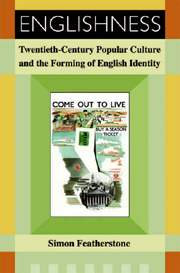7 - Sport
Published online by Cambridge University Press: 12 September 2012
Summary
The fights between Randolph Turpin and Sugar Ray Robinson, as well as suggesting the transatlantic cultural politics of postwar England, illustrated an English problem with sporting style. Robinson, the selfproclaimed ‘artiste’, confronted what he later termed the ‘ruffian style’ of the Englishman, a remorseless unrefined battling that led A. J. Liebling, reporting the re-match for the New Yorker, to describe it as a throwback to the static pugilistic method of Regency prize-fighters (Robinson 1992: 201; Liebling 1956: 50). It was just this anti-style that was represented by contemporary English journalists as proof of Turpin's essential Englishness – the traditional straight left set against Robinson's transatlantic extravagance. Sporting style has always tended to be treated with caution in English sport and identified with the exotic ways of foreign competitors, a judgement that has a bearing upon the politics of Englishness and its engagement with modernity.
C. L. R. James was perhaps the first theorist of sport to connect the way that a game was played with the social and historical moment of that play. For James, sport was a social and historical theatre, and stylistic innovation was necessarily political innovation. In his writings on cricket the great players – Grace, Constantine, Bradman, Sobers – are presented not as individualists but as embodiments of moments of historical change, whether it is that of industrialising England in the case of Grace or Caribbean independence in that of Constantine and Sobers.
- Type
- Chapter
- Information
- EnglishnessTwentieth-Century Popular Culture and the Forming of English Identity, pp. 121 - 139Publisher: Edinburgh University PressPrint publication year: 2008



